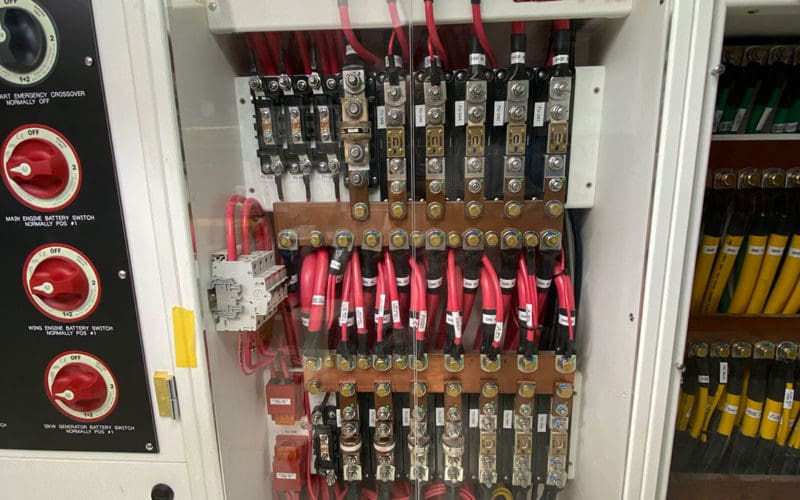A defining feature of a luxury motor yacht is the efficiency and durability of its electrical systems. Whether at dockside, at anchor or offshore, crew and passengers need to know their vessel is capable of meeting their demands for safety and comfort around the clock. Emblematic of highly evolved offshore vessels meeting these demands are those produced by Nordhavn, a builder of high-end luxury motor yachts in Dana Point, California. Nordhavn yachts feature fuel-efficient propulsion plants, along with aggressive electrical generating and power storage systems, designed to take voyagers across the world’s oceans in comfort and safety. Electrically thinking Before…
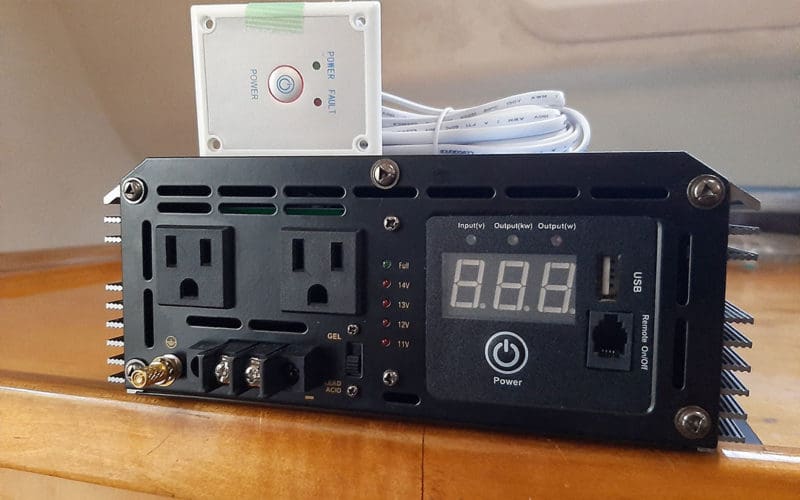
One of the more useful electronic devices on a cruising sailboat is an inverter. Simply put, inverters convert direct current (DC) battery energy into alternating current (AC) power. They can run much of our common household equipment like cooking appliances, power tools, TVs and electronic chargers. When there is no shore power or a generator available this is a great option. But there is much more to choosing, installing and using inverters.Let’s have a closer look. Basics Inverters are able to increase 12- or 24-volt DC energy into 120- or 240-volt AC silently and on demand. They can be made…
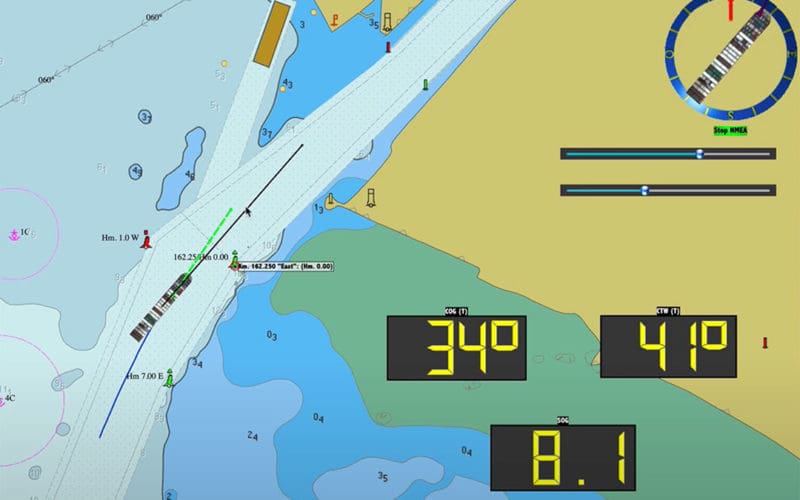
Modern electronic charting on multifunction displays is a powerful tool for the voyager — they can know position and other navigational info just by glancing at a screen. With position data provided by GPS, and with some installations buttressed by input from the Galileo, the European analog of GPS, electronic chart navigation is accurate and convenient. In certain situations, however, voyagers can improve their navigation awareness and avoid possible problems by using tools that are a part of the electronic chart toolkit, but which might be turned off. In order to declutter the screen and show those elements a mariner…
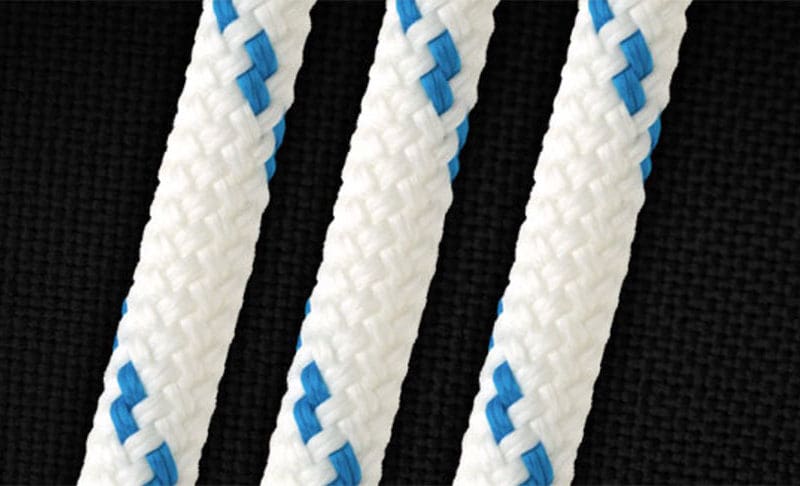
When considering gear for a voyaging boat, you likely think of a diesel engine or a multifunction display or a bank of batteries. But there’s another type of equipment that most voyaging boats, especially sailboats, can’t operate without: the simple but vital tool of rope. Without rope (line on a sailboat), sailing a boat offshore would be all but impossible. And while rope may seem like a fully developed product in the age of satphones, rope innovation continues. One example of this is Yale Cordage’s ULS Yacht Braid product, a rope for cruising boats that takes advantage of newer materials…
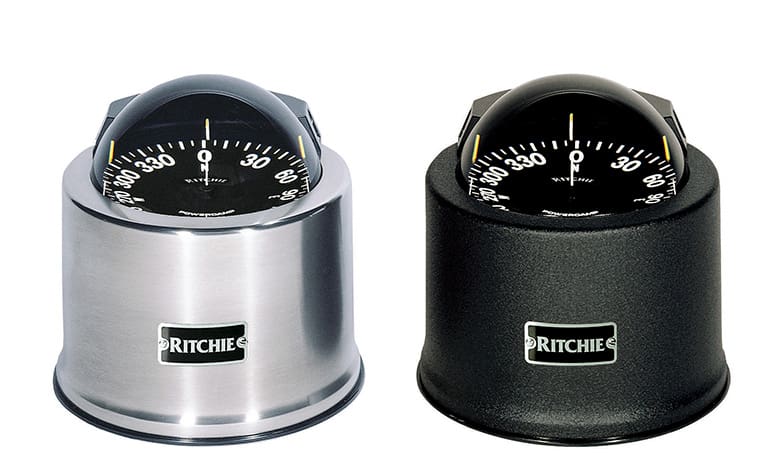
In a world of GPS and LCD screens that can display any navigation parameter possible, does the floating-card magnetic compass still make sense? To pose the question is in a sense to answer it, so let’s look at the value a magnetic compass provides to the voyager. In addition to the classic magnetic compass, for some time now voyagers have had electronic versions of the compass. The most common of these being the magnetic fluxgate. While fluxgates use electronic signal processing to provide a readout of direction to the user, at their heart they determine direction by sensing the earth’s…
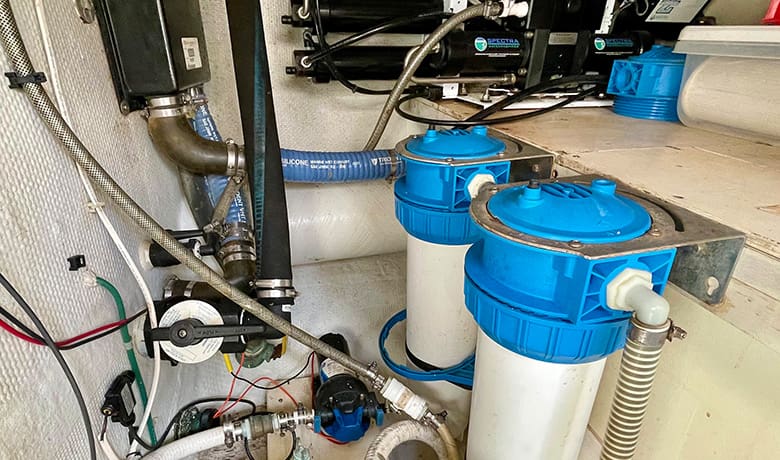
A watermaker setup like this frees the voyager from the tyrrany of searching for and then hauling fresh water at every stop on a passage. The Schenker Zen 30 is a smaller model not much bigger than a briefcase yet it produces a respectable 8 gallons of fresh water per hour.This Parker Marine Village LTM series AC watermaker produces up to 1,800 gallons per day and comes with an optional salinity monitor and diversion valve.FCI’s Aquamiser+ is available in framed and modular configurations, featuring staged priming of motors and constant monitoring of product water.The Spectra Ventura 150 runs on 12…
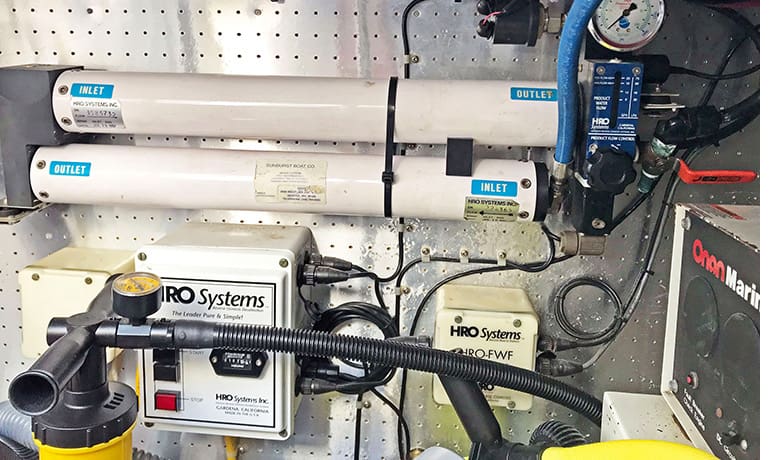
Ease of access often translates into ease of maintenance. Think about servicing tasks when choosing an installtion site. The Katadyn Power Survivor 80e makes up to 3.4 gallons an hourWatermaker pre-filters.This Spectra Newport installation fits nicely in the space. But maintence or repair may require some disassembly.The control panel and cover of an installed version of a Rainman watermaker. Previous Next A couple years ago a friend of mine asked me to deliver his 50-foot boat from Florida to the Bahamas just before Christmas. The idea was for him to fly in with his family and spend a week cruising…
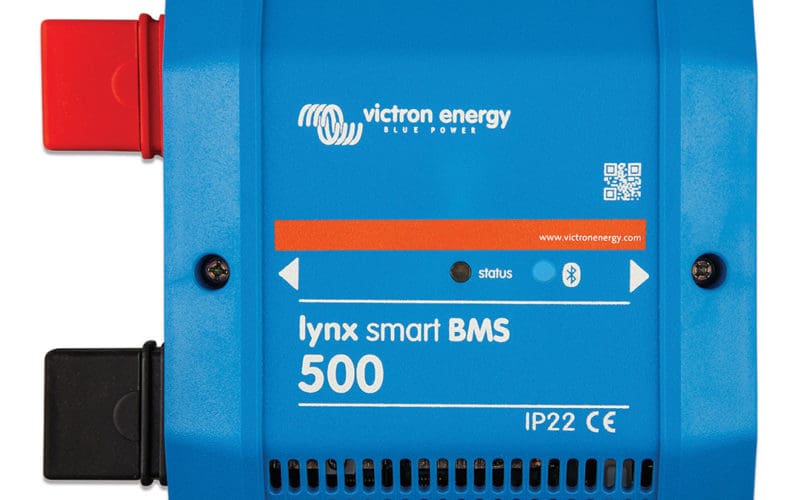
The 2021 winner of the Ocean Navigator Chuck Husick Marine Technology Award is the Lynx Smart Battery Management System (BMS) (www.victronenergy.com/battery-management-systems/lynx-smart-bms). The Lynx unit is a full-featured BMSystem for managing lithium batteries, with capabilities like a battery monitor showing state of charge, a pre-alarm signal, Bluetooth connectivity, local and remote monitoring using a Victron GX device and more. Husick award judge and voyager Rebecca Childress wrote in an email, “Victron makes amazing products and this one sounds like another great way to stay on top of your electrical setup!” The runner-up finalist was the Groco E Valve series with a…
In a recent issue that included a story on repowering, we wrote that Volvo marine marinizes Kubota engines for some of its engine offerings. This point brought a response from Stanley Feigenbaum, one of the founders and former owners of Beta Marine engines in the U.S., who informed us that Volvo uses a diesel engine manufactured by the Shibaura engine company as the basis for some of its marine engines. This was helpful, but it raised the question: what exactly does marinizing an engine mean and why is it important? It’s no surprise that the marine engine market is significantly…
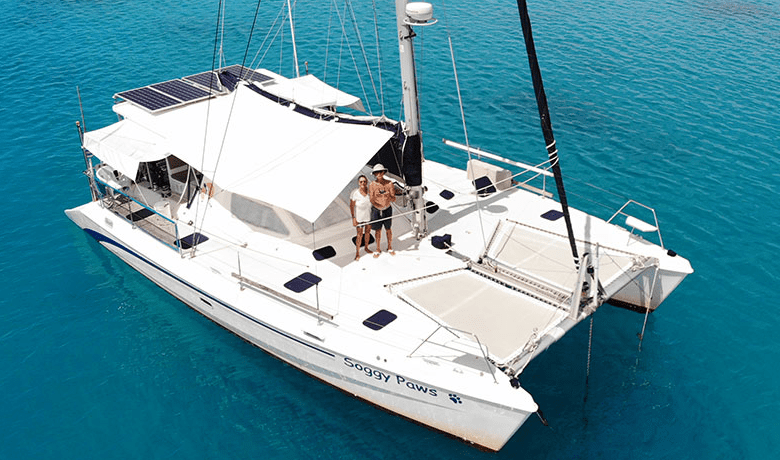
Dave and Sherry McCampbell aboard their St. Francis 44 Mark II cat Soggy Paws in the Solomon Islands. Prismatic cell compression box. McCampbell’s gear for testing the new batteries. Fotek solid state relay. Voltage Curve Battery 1-5w/ 35A Load Previous Next Editor’s note: Below is Part 2 of an article providing information on choosing and installing a LiFePO4 lithium battery system aboard a cruising sailboat. Part 1 appeared in our 2021 Ocean Voyager annual issue on page 8. Recently we removed 390 pounds of GEL lead acid batteries from our catamaran and replaced them with 100 pounds of lithium (LiFePO4)…

